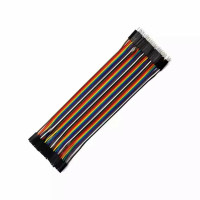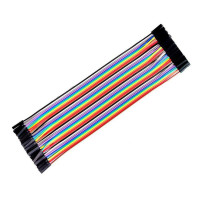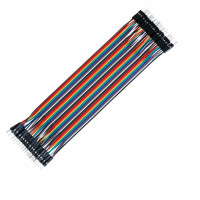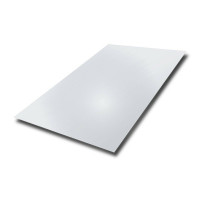The STM32 Nucleo
Development Board is a versatile prototyping platform featuring an STM32
microcontroller with ARM Cortex-M cores, Arduino and ST morpho headers for
expansion, and onboard ST-LINK debugger/programmer. It supports various power
modes and is ideal for rapid development of embedded applications.
Description
The STM32 Nucleo
Development Board is a versatile and cost-effective platform designed for
prototyping, learning, and embedded system development. It provides a flexible
way to evaluate STM32 microcontrollers, supporting various series (F0, F1, F3,
F4, F7, L0, L1, L4, etc.).
Equipped with Arduino
Uno V3 and ST morpho extension headers, the board allows easy hardware
expansion and compatibility with various shields. It features an onboard
ST-LINK/V2-1 debugger/programmer, eliminating the need for an external
debugger. With low-power capabilities, extensive peripherals, and robust
processing power, the STM32 Nucleo is ideal for IoT, robotics, industrial
automation, and embedded applications.
Specifications
- Microcontroller: STM32 series MCU (varies
based on model)
- CPU Architecture: ARM Cortex-M (M0, M3,
M4, M7, or M33 depending on the variant)
- Operating Voltage: 3.3V / 5V
- Clock Speed: Up to 216 MHz (depends on the
MCU variant)
- Flash Memory: 32 KB to 2 MB (model
dependent)
- RAM: 8 KB to 512 KB
- EEPROM: Available in some models
- Communication Interfaces:
- UART, SPI, I2C, CAN, USB, and Ethernet
(varies per model)
- Onboard ST-LINK/V2-1 debugger/programmer
with virtual COM port
- GPIO Pins: Up to 50+ (model dependent)
- Analog Input: Multiple ADC channels
(12-bit to 16-bit resolution)
- PWM Output: Multiple channels for motor
control and signal generation
- Expansion Compatibility:
- Arduino Uno V3 headers for standard
shields
- ST morpho connectors for STM32-specific
expansion
- Debugging & Programming:
- ST-LINK/V2-1 onboard (SWD and
drag-and-drop programming)
- USB mass storage and virtual COM port
support
- Power Supply Options:
- USB 5V
- External power via VIN or E5V pin
- 3.3V and 5V regulated outputs available
- Low Power Features: Supports various
power-saving modes for battery-operated applications
- PCB Design: Compact, with dedicated
jumpers for configuration
Features
1. High-Performance
STM32 Microcontroller
- Supports ARM Cortex-M-based STM32 MCUs
with varying performance levels
- Optimized for real-time processing, IoT
applications, and signal processing
2. Integrated
Debugging & Programming
- Onboard ST-LINK/V2-1 debugger/programmer
- No need for an external debugger (supports
SWD, drag-and-drop programming, and virtual COM port)
3. Flexible Expansion
Options
- Arduino Uno V3 headers for Arduino shields
and add-on boards
- ST morpho extension connectors for direct
access to STM32 peripherals
4. Rich Communication
Interfaces
- Multiple UART, SPI, I2C, and CAN
interfaces
- USB and Ethernet support in advanced
models
- Wireless communication compatibility with
external modules
5. Power Versatility
- Operates on USB 5V, external power supply,
or battery
- Onboard voltage regulators provide 3.3V
and 5V outputs
6. Advanced
Peripherals & GPIOs
- Multiple ADCs (12-bit to 16-bit
resolution)
- PWM outputs for motor control and signal
modulation
- Dedicated interrupt pins and timers for
precision control
7. Low-Power
Consumption
- Multiple power-saving modes for
battery-operated applications
- Ideal for IoT and wearable applications
8. Multi-Environment
Support
- Compatible with Mbed OS, STM32Cube, Keil,
IAR, and Arduino IDE
- Supports bare-metal programming and RTOS
applications
Applications
1. Embedded System Development & Learning
·
Ideal for
students, hobbyists, and engineers to develop and test STM32-based projects
·
Used in
academic institutions for teaching ARM-based programming
2. IoT (Internet of Things) Applications
·
Integrated
with Wi-Fi, Bluetooth, or LoRa modules for IoT projects
·
Remote
monitoring, automation, and data logging
3. Robotics & Motor Control
·
Multiple
PWM outputs for controlling servo motors, stepper motors, and robotic arms
·
Real-time
processing capabilities for robotics and automation
4. Industrial Automation & Control
·
Used in
PLCs, smart sensors, and factory automation systems
·
Supports
CAN, Ethernet, and industrial communication protocols
5. Smart Home & Home Automation
·
Interfacing
with relays, sensors, and wireless modules for smart home applications
·
Controlling
home appliances via Wi-Fi, Bluetooth, or Zigbee
6. Wearable & Battery-Powered Applications
·
Low-power
design makes it suitable for portable devices
·
Used in
fitness trackers, health monitoring devices, and sensor-based systems
7. Sensor Data Acquisition & Real-Time Monitoring
·
Multiple
ADC channels for data logging and environmental monitoring
·
Interfacing
with temperature, humidity, gas, and motion sensors
8. AI & Edge Computing
·
Compatible
with TensorFlow Lite and machine learning libraries
·
Used in
AI-driven sensor applications and predictive analytics











